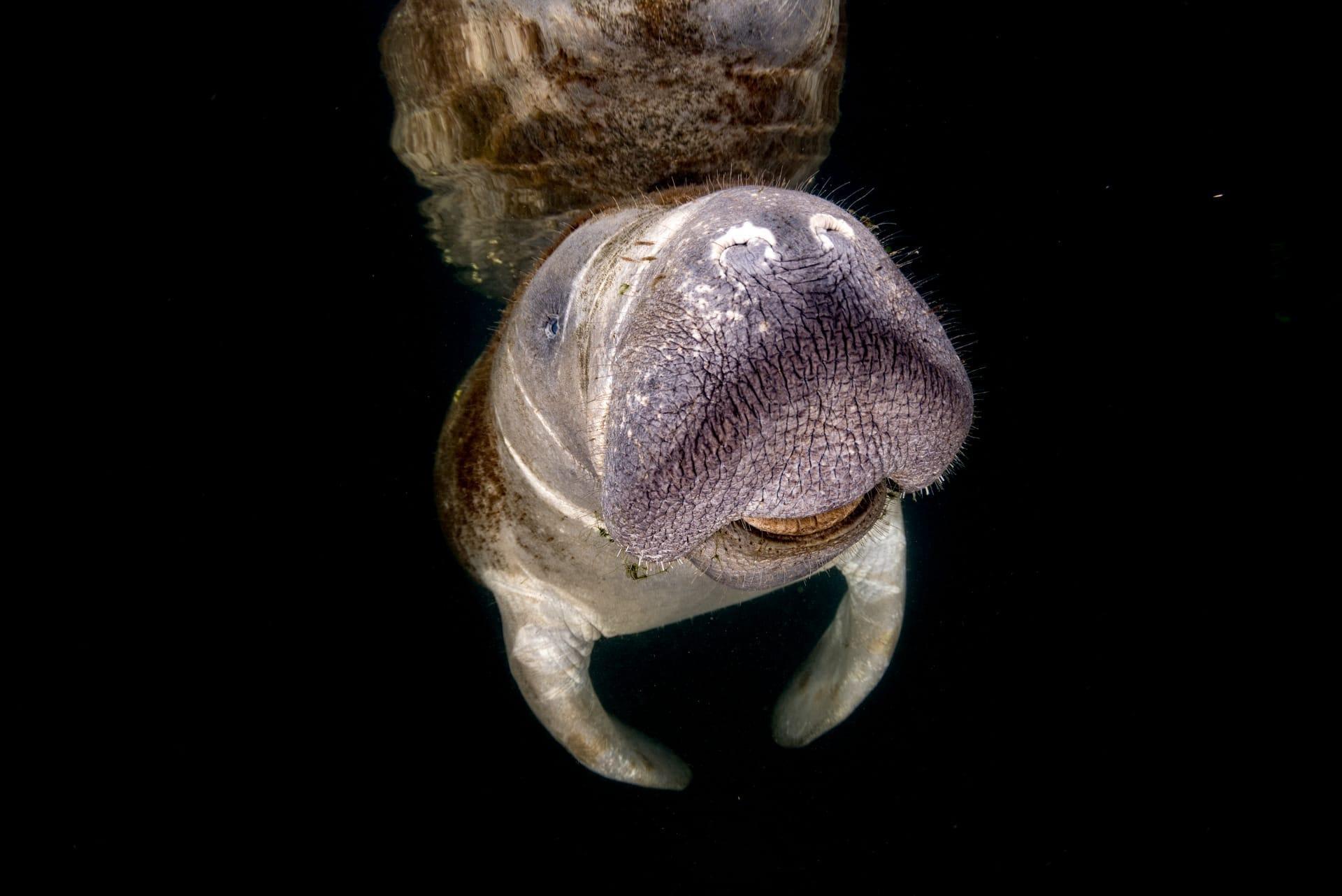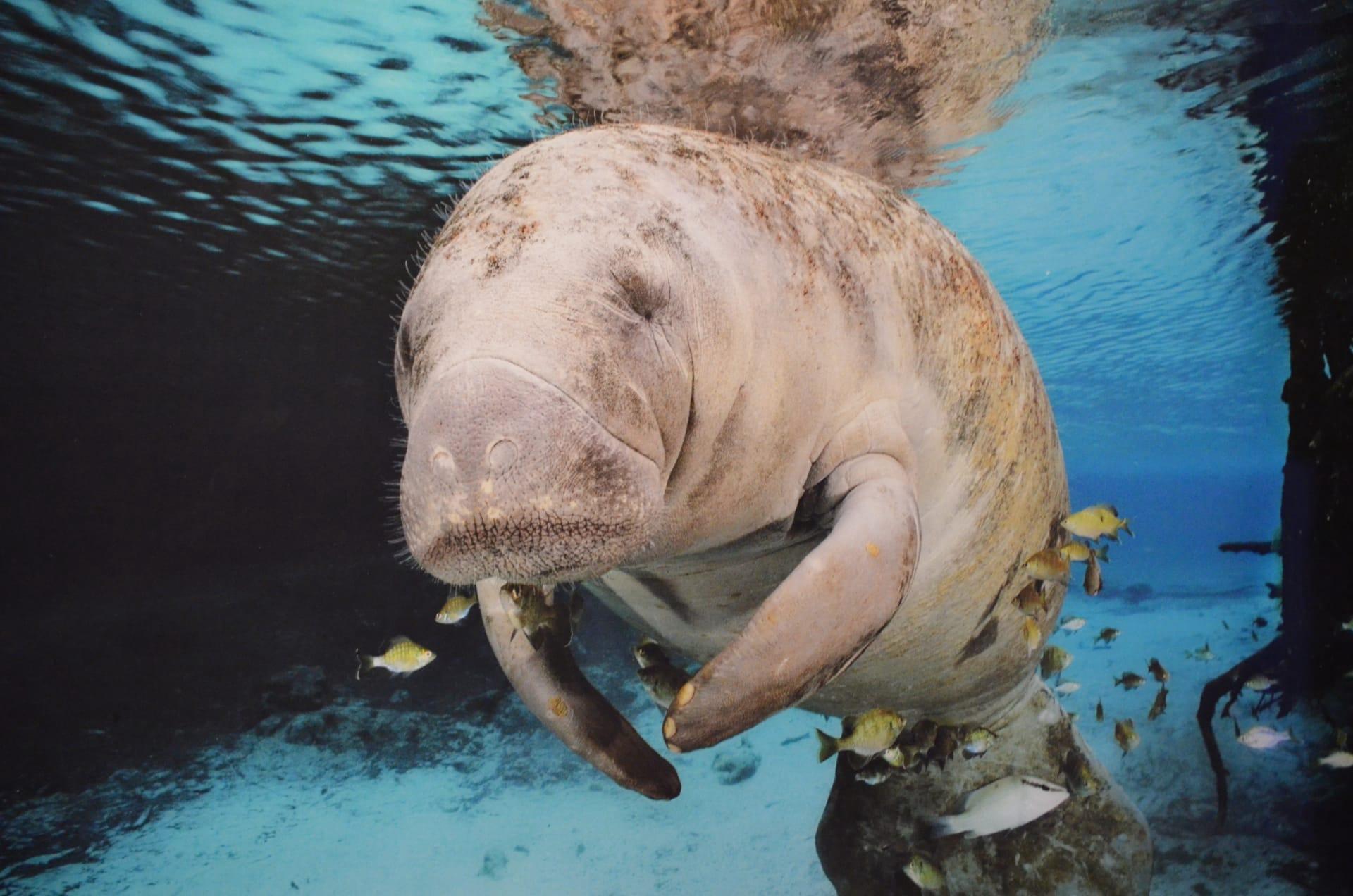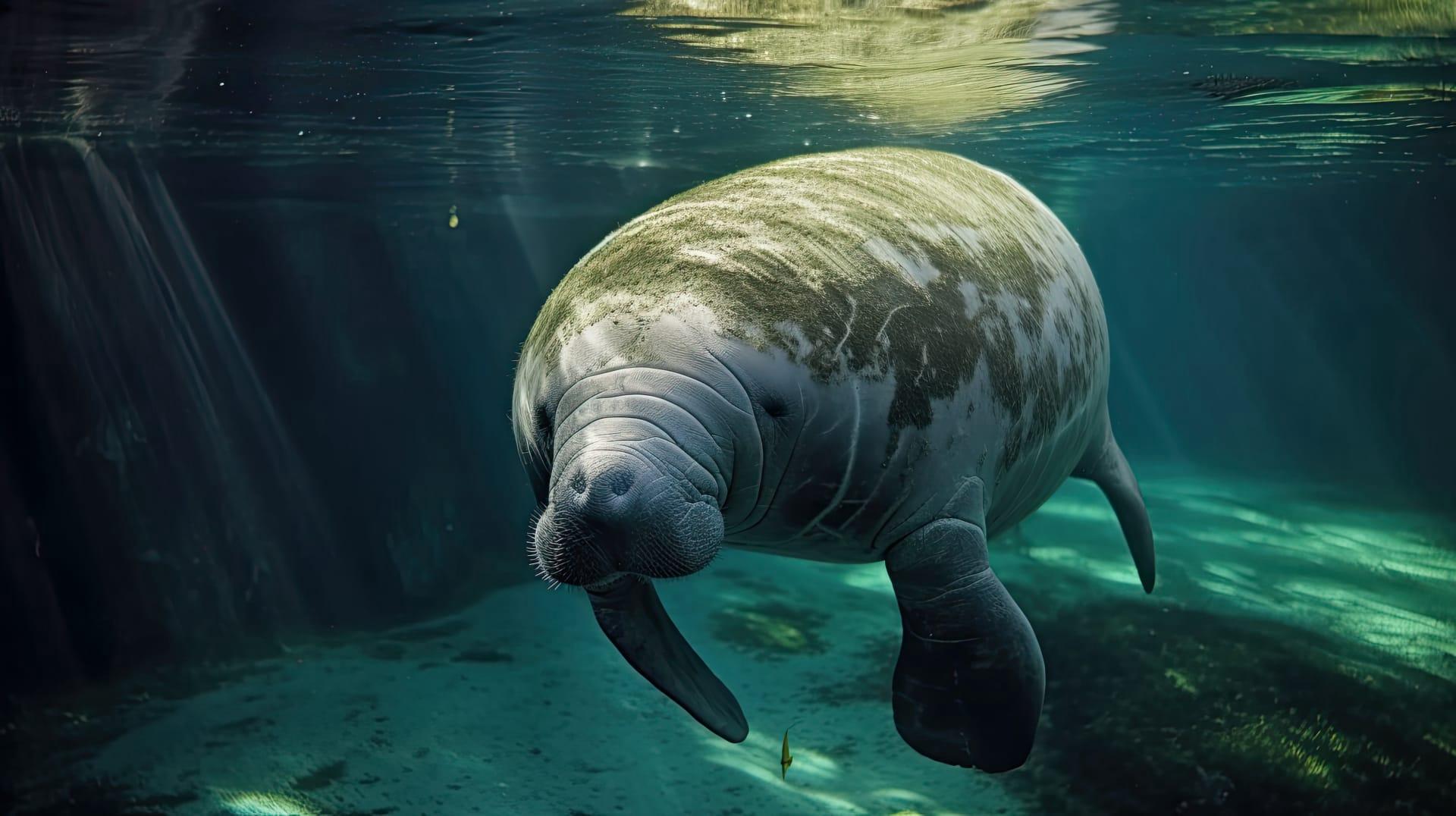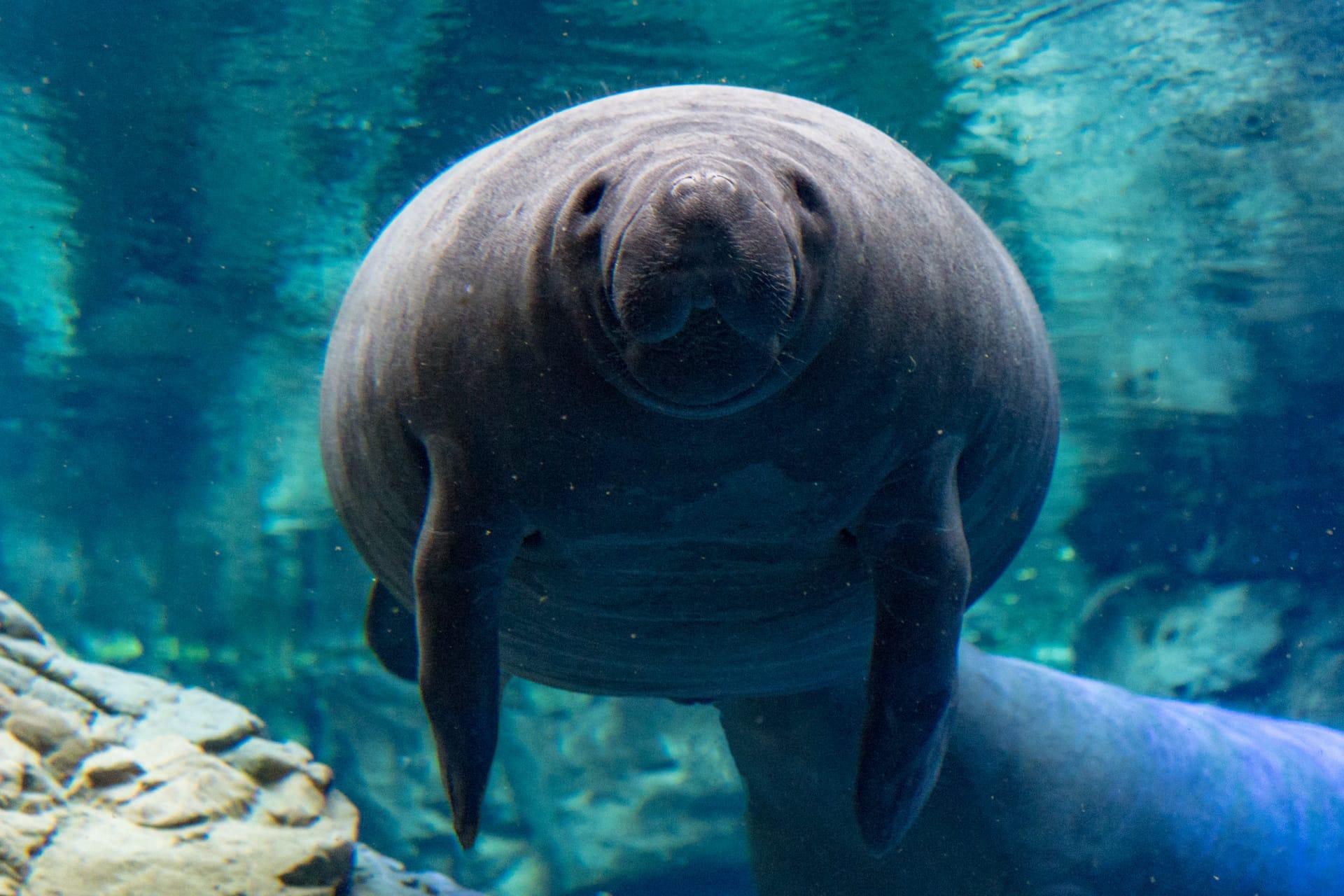Manatee Trivia
- Home /
- Trivia Question /
- Animal /
- Manatee Trivia
1
Question: What do manatees eat, and how much can they consume in a day?
Answer: Manatees are herbivores, primarily feeding on a variety of aquatic plants like seagrass, algae, and mangrove leaves. An adult manatee can eat about 10-15% of its body weight daily. Considering an average adult weighs around 1,000 pounds (about 450 kg), this means they can consume approximately 100-150 pounds (45-68 kg) of vegetation each day.
Question: How long do manatees live, and what are their main threats in the wild?
Answer: Manatees can live up to 40 years in the wild, though their lifespan is often shorter due to various threats. The primary risks to manatees include boat collisions, loss of habitat, entanglement in fishing gear, and cold stress. Conservation efforts are crucial for their survival, especially in areas with heavy boat traffic and declining habitats.

2
Question: Are manatees related to dolphins?
Answer: Contrary to a common misconception, manatees are not closely related to dolphins. They are part of the order Sirenia, more closely related to elephants. This connection is seen in their similar skin texture and nails on their flippers, resembling an elephant's toenails.
Question: Do manatees have natural predators?
Answer: Manatees do not have significant natural predators in the wild. Their large size and habitat preferences generally keep them safe from most marine predators. However, human activities, such as boat strikes and habitat destruction, pose the greatest threats to their survival.

3
Question: How do manatees communicate?
Answer: Manatees communicate through a combination of vocalizations and physical gestures. They produce sounds like squeaks, chirps, and whistles, especially between mothers and calves or during social interactions. These sounds are thought to convey emotions, intentions, and individual identity.
Question: What is unique about manatees' teeth?
Answer: Manatees have an unusual dental feature called "marching molars." Their teeth are continuously replaced throughout their lives, with new teeth growing at the back of the mouth and moving forward to replace worn ones. This adaptation is particularly useful for their diet of abrasive vegetation.

4
Question: Can manatees survive in both saltwater and freshwater?
Answer: Yes, manatees are capable of living in both saltwater and freshwater environments. They are commonly found in coastal areas, rivers, and estuaries. This adaptability allows them to access a wide range of feeding grounds and habitats.
Question: How do manatees regulate their body temperature?
Answer: Manatees have a low metabolic rate and lack a significant layer of blubber, making them sensitive to cold water temperatures. They regulate their body temperature by migrating to warmer waters during colder months. Manatees are known to seek out natural warm-water springs or warm water effluents from power plants.

5
Question: Are manatees intelligent?
Answer: Manatees are considered to be intelligent animals with good long-term memory. They demonstrate complex learning and problem-solving abilities. Manatees' social behaviors and communication skills also indicate a level of intelligence comparable to other marine mammals.
Question: How fast can manatees swim?
Answer: Manatees are generally slow-moving animals, typically swimming at speeds of 3-5 miles per hour (about 5-8 km/h). However, they can reach short bursts of speed up to 15 miles per hour (24 km/h) in short spurts. This leisurely pace reflects their calm and gentle nature.